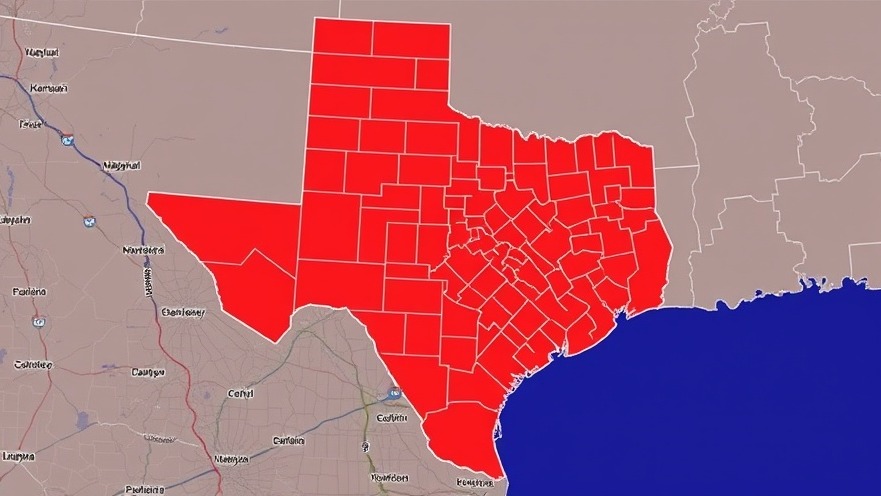
Challenges Ahead: The Texas Redistricting Drama
The landscape of Texas politics is about to shift dramatically as a new congressional map proposed by state Republicans could lead to considerable intra-party conflict among Democrats. At stake are their political futures, as multiple Democratic incumbents find themselves squeezed into the same districts, essentially forcing them to compete against each other in the upcoming 2026 primaries.
The map, championed by state Rep. Todd Hunter, R-Corpus Christi, aims to carve out Republican-friendly districts in key urban areas like Austin, Dallas, and Houston. This redistricting effort not only seeks to fortify GOP power in these regions but also jeopardizes the re-election prospects of existing Democratic lawmakers.
A Historical Context and Its Consequences
This dramatic reshaping of districts comes on the heels of a political climate increasingly polarized along party lines. Texas, which has traditionally favorably leaned Democratic in urban centers, now witnesses the once-solid blue districts being turned into battlegrounds. Historical precedents show that challenges from within the party can leave legislators vulnerable and create divides that can undermine cohesion, as evidenced by the Democrats facing similar situations during prior redistricting efforts.
The Implications of Intra-Party Conflict
In the upcoming primaries, several Democratic incumbents have already been drawn into overlapping districts. In Austin, for instance, progressive stalwarts Reps. Lloyd Doggett and Greg Casar find themselves vying for the same spot in a district that has been redrawn to consolidate their voting bases. This conflict not only presents a personal dilemma for the candidates but also raises larger questions regarding the future direction of the Democratic Party in Texas.
Realignments and New Dynamics
As the new primary elections approach, candidates will face critical decisions that could change the dynamics of Texas politics. For instance, with Democrats competing against one another, they risk diluting their strength against Republicans who will rally behind their candidates without facing any internal strife. The move to consolidate districts is designed to send incumbents scurrying into unfamiliar territory, likely resulting in a showdown between seasoned politicians and new challengers.
Tensions Over Age and Seniority
An interesting subplot in this political drama is the generational conflict that could arise as older, long-serving Democratic members confront younger lawmakers in their newly drawn districts. This age dynamic not only impacts campaign strategies but also influences voter perceptions, especially in a state that values fresh perspectives and innovative ideas. Who will secure the allegiance of the Democratic base? The well-known representatives or the rising stars of the party?
Community and Civic Engagement: A Call to Action
In light of these developments, Texas Democrats are mobilizing community engagement efforts to contest the proposed map. Activists and lawmakers alike are utilizing grassroots campaigns to rally donor support and challenge the viability of the Republican plan through public testimonies and potential quorum breaks during legislative sessions. Engaging the electorate is crucial now more than ever, as public opinion can pressure legislative decisions.
Looking Ahead: Potential Outcomes
The Republican redistricting proposal remains in flux, subject to changes based on feedback, opposition, and legal challenges. If passed in its current form, it could significantly alter the face of Texas congressional representation. Watch for potential lawsuits regarding the map's legality and ethnic fairness, as proposed configurations have been met with accusations of drawing districts that disenfranchise minority voters.
Conclusion: The Importance of Civic Awareness
As the battle over Texas' congressional map continues, the implications of these changes can be profound. With increasing tensions among Democratic incumbents and the Republican majority seeking to solidify their foothold, now is the time for Texans to stay informed about their congressional races, engage with local leaders, and participate in discussions surrounding these pivotal electoral adjustments. Keeping abreast of how these changes affect community representation can empower voters to make informed decisions in the ballots ahead.
 Add Element
Add Element  Add Row
Add Row 



Write A Comment